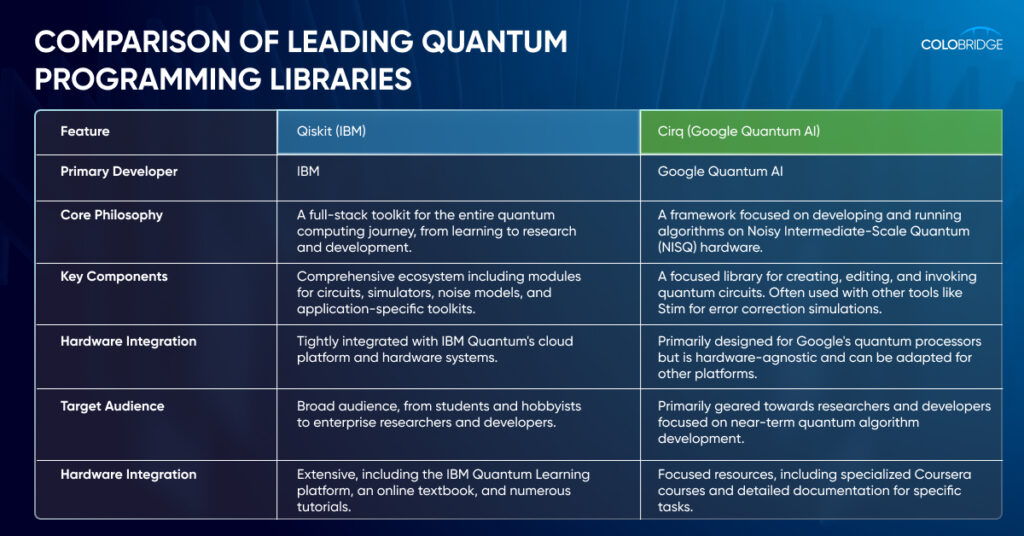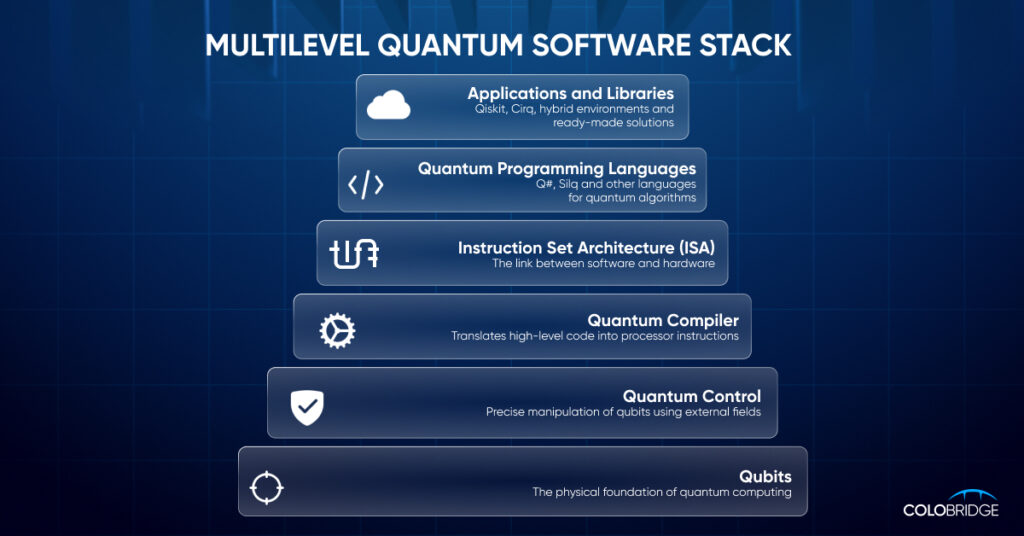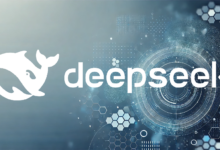Author: Bakhmat M.
The rapid evolution of quantum computing hardware demands equally sophisticated software and tools to fully harness its capabilities. This guide provides a comprehensive overview of the specialized software stack essential for developing and executing algorithms on quantum computers. We will explore quantum programming languages, key libraries, the quantum compiler, and innovative environments that seamlessly integrate quantum and classical resources.
- Key Quantum Programming Libraries: The Foundational Building Blocks
- Innovative Programming Models and Environments: Bridging Worlds
- The Multi-Layered Quantum Software Stack: From Qubits to Applications
- Why Investing in Quantum Software is Crucial for Your Business Today
- Frequently Asked Questions (FAQ) about Quantum Software
Colobridge Expert Commentary:
“Many of our clients perceive quantum computers as something abstract and inaccessible. But it’s the software that makes this complex technology tangible. Libraries like Qiskit and Cirq, along with cloud platforms, are breaking down the barrier to entry. Today, any company can begin experimenting with quantum algorithms without building its own data center. Understanding these tools is the first step for any business looking to explore quantum machine learning or optimization tasks. Our role as an infrastructure partner is to provide a stable and secure hybrid environment where classical and quantum workloads can interact efficiently to solve real-world problems.”
Key Quantum Programming Libraries: The Foundational Building Blocks
To empower a quantum programmer to build and run quantum circuits, several leading open-source libraries have emerged.
- Cirq (Google Quantum AI): A powerful open-source framework specifically designed for building, manipulating, and optimizing quantum circuits. It provides critical tools for working with noisy intermediate-scale quantum (NISQ) computers, enabling researchers to experiment with and advance quantum algorithms.
- Qiskit (IBM): Widely recognized as “the toolkit for useful quantum computing.” This comprehensive suite facilitates quantum development, offering modules for composing programs, executing them on actual quantum hardware or simulators, and analyzing results.

Innovative Programming Models and Environments: Bridging Worlds
New programming models are constantly appearing, simplifying the joint use of quantum and classical computing resources, which is a vital step toward practical solutions.
- Quantum Serverless: This pioneering programming model from IBM provides a simplified interface for executing complex workloads that span both quantum and classical resources. Developers can focus on their code, while Quantum Serverless handles complex tasks like circuit knitting and parallel execution.
- Runtime Environments: Environments like Qiskit Runtime offer optimized access for executing tasks on IBM quantum computers, significantly improving performance by integrating quantum and classical workflows through hybrid cloud middleware.
- Educational Tools: For hands-on experience in quantum error correction, Google’s Coursera course utilizes industry-standard software tools like Stim and Crumble, fostering the development of essential quantum skills.
The Multi-Layered Quantum Software Stack: From Qubits to Applications
The quantum software stack is a complex, multi-layered architecture. Understanding this stack is essential for anyone beginning their journey into quantum programming.
- Quantum Programming Languages: Specialized languages created for quantum computation (e.g., Q#, Silq).
- Quantum Instruction Set Architectures: The interface that enables communication between software and quantum hardware.
- Quantum Compiler: A tool that translates high-level quantum code into the specific instructions required by quantum processors.
- Quantum Operating Systems: Systems designed to manage quantum resources and efficiently organize operations.
- Error Correction Mechanisms: Critically important for mitigating the inherent fragility and susceptibility of qubits to noise.
- Quantum Control: A fundamental component involving the precise manipulation of qubits using external fields (microwaves, lasers). Optimal control is necessary to achieve high algorithm performance and scale quantum computers.

Why Investing in Quantum Software is Crucial for Your Business Today
For businesses, proactively understanding and utilizing the quantum software stack is not a futuristic endeavor but a way to secure a competitive advantage for tomorrow.
- Solving Complex Problems: Solutions enhanced by quantum computing can tackle challenges currently beyond the reach of classical computers. This is especially true for quantum machine learning, where analyzing complex patterns in large datasets can lead to breakthroughs.
- Preparing for the Future: Early adoption of solutions based on quantum AI, driven by software innovation, positions companies for long-term success as the technology matures.
- Mutual Enhancement of AI and Quantum: Quantum systems will empower AI, and AI, in turn, plays a crucial role in optimizing quantum algorithms. This can be described as a mutual “dance” between “Quantum for AI” and “AI for Quantum.”
Frequently Asked Questions (FAQ) about Quantum Software
What is the primary role of quantum software?
Quantum software serves as the essential bridge that allows for the development, execution, and effective management of algorithms on quantum computers. It translates complex theoretical quantum mechanics into practical applications and enables hybrid computation.
How do quantum programming libraries differ from classical ones?
Unlike classical libraries that manipulate binary bits (0 or 1), quantum libraries like Cirq and Qiskit are specifically designed to interact with qubits. Qubits leverage quantum phenomena like superposition and entanglement, allowing them to exist in multiple states simultaneously and process vast amounts of data in parallel.
Why is quantum error correction so vital for practical software development?
Qubits are inherently fragile and highly susceptible to errors, leading to rapid information loss (decoherence). Quantum error correction, implemented through specialized software tools, is absolutely essential to detect and correct these errors in real-time, ensuring accurate and reliable results.
What does it take to become a quantum programmer?
To become a quantum programmer, one needs a strong foundation in linear algebra, quantum mechanics, and computer science. Practical experience can be gained by using open-source libraries like Qiskit and Cirq and by taking specialized courses offered by leading tech companies and universities.





